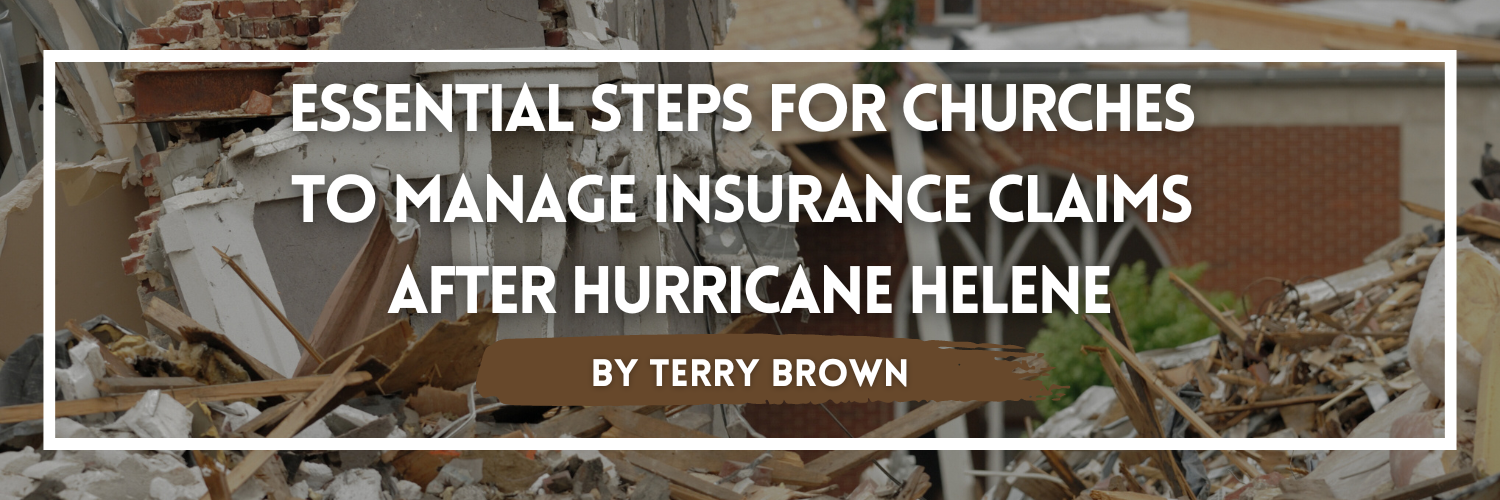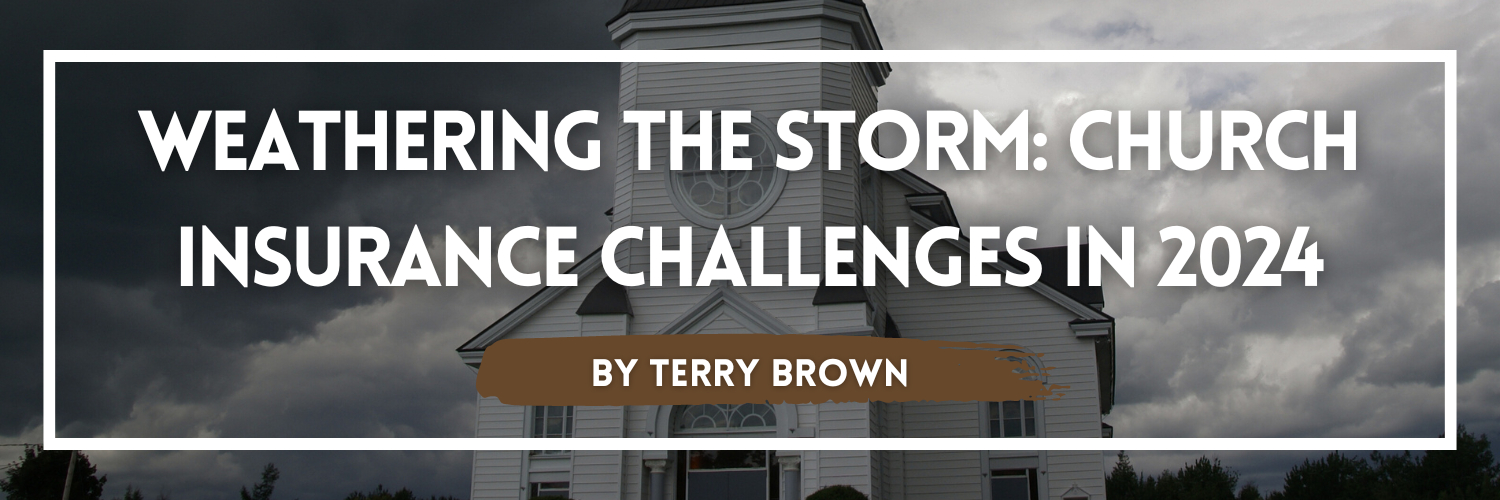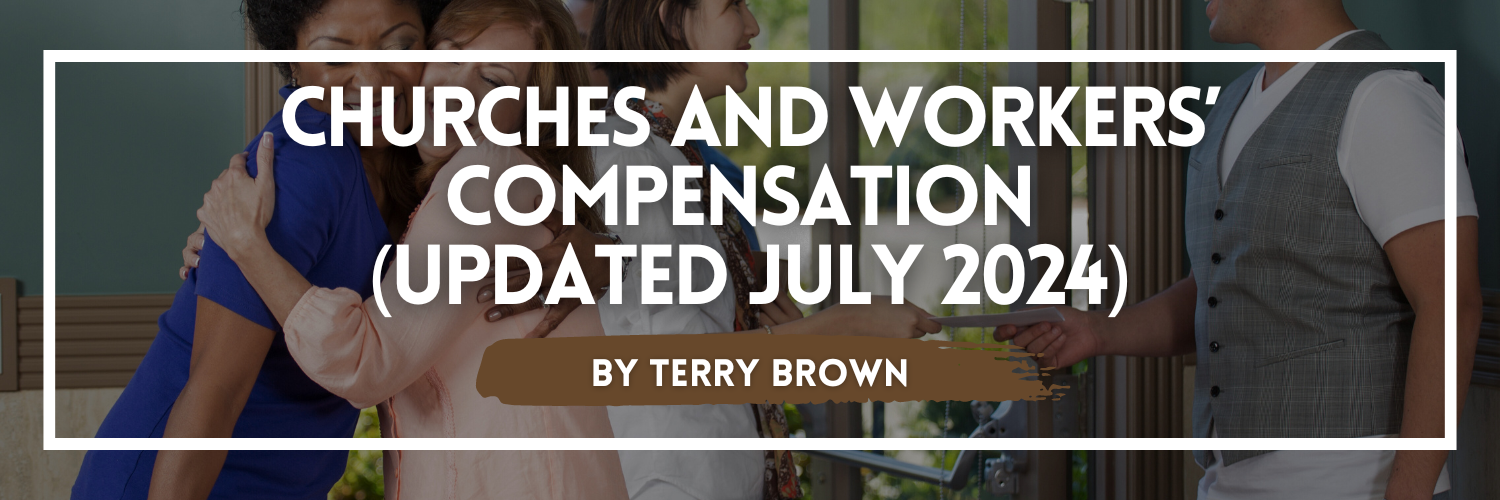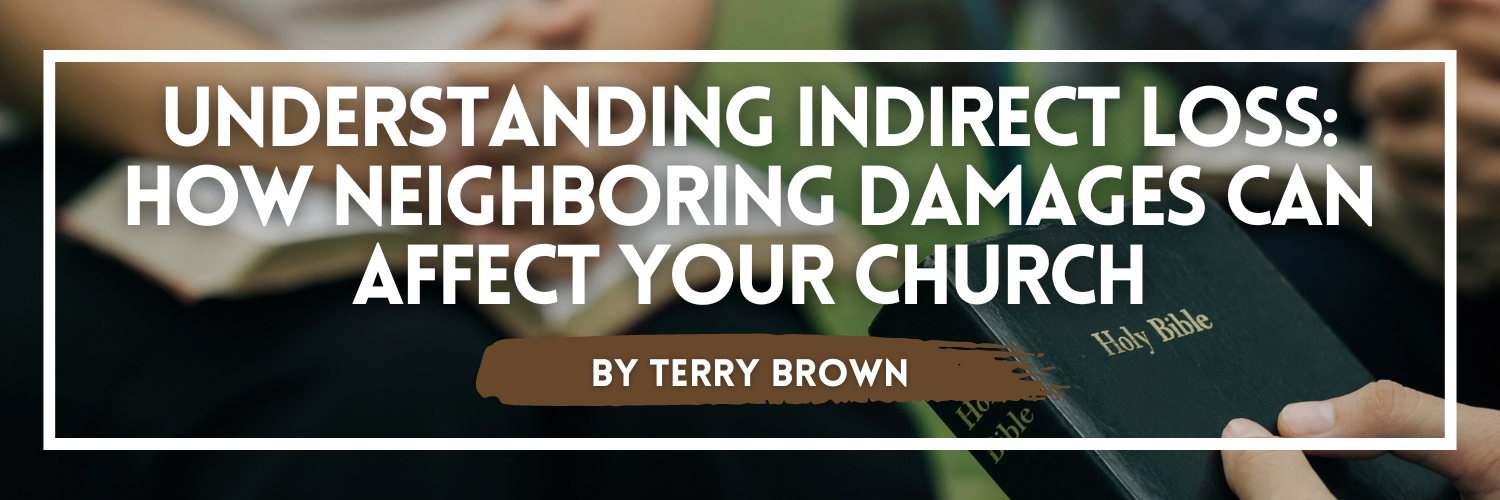Hurricane Helene has brought widespread devastation across the Southeast, with churches among the hardest hit. If your church is facing physical damage, flooding, or disruptions in operations, it’s crucial to act swiftly and carefully when dealing with your church insurance company. In this guide, we’ll walk through the key steps to ensure your church receives the support it needs to recover and rebuild.
KEY TAKEAWAYS
- Document damage: Capture photos, videos, and item lists before cleaning up.
- File claims promptly: Contact your insurer immediately to avoid delays.
- Review your policy: Understand coverage limits, deductibles, and exclusions.
- Record emergency repairs: Keep receipts for temporary fixes to prevent more damage.
- Claim lost income: Track disruptions to maximize business interruption coverage.
- Work with an adjuster: Ensure they are familiar with church properties.
- Plan for the future: Update policies and disaster plans after recovery.
TABLE OF CONTENTS
Prioritize Safety and Secure Your Property
- Before documenting any damage, ensure the safety of staff and volunteers. Avoid entering any structurally unsafe buildings.
- Secure your property to prevent further damage—cover broken windows, put tarps over roofs, and ensure that exposed interiors are protected from rain.
- Keep receipts of any immediate repairs or purchases of materials, as these may be reimbursable under your policy’s emergency repairs clause.
Thoroughly Document the Damage
- Take high-resolution photos and videos of all damage, covering every angle of your church, including roofs, stained glass windows, and valuable furnishings like pews and sound equipment.
- Make a detailed inventory of items that are damaged, destroyed, or missing. Include serial numbers for equipment where possible. Ensure this is cross-referenced with the church’s existing property records.
- Document flood damage separately, as some policies handle this under different provisions or require specific coverage through the National Flood Insurance Program (NFIP).
Tip: Don’t discard any damaged items before the adjuster has completed their assessment. Even heavily damaged or destroyed items should be kept until inspected by your insurance company.
Contact Your Insurance Provider and File a Claim Promptly
- Report the claim immediately to avoid delays or claim denial based on time limits in your policy. Many policies have strict deadlines for filing claims after a disaster.
- Be prepared with all relevant information, including your policy number, a list of damages, and any preliminary estimates for repairs. If possible, have a representative of your church who is familiar with the building or past insurance claims handle communications with the insurer.
- Ask if your policy includes loss mitigation coverage—which may help cover temporary repairs or relocation costs if your church cannot operate at its regular site.
Understand Your Policy and Coverage Limits
- Review your insurance policy closely to understand what is covered under Property, Liability, and Business Interruption Insurance. Churches often have specialized items like religious artifacts, stained glass, and audio-visual equipment that may require specific endorsements for full reimbursement.
- Pay special attention to deductibles and exclusions, especially for hurricane-related damage. Flood insurance is often handled separately, and some churches might not be fully aware of what their policies cover in this regard.
- Inland Marine coverage may protect church items stored offsite or in transit, so be sure to check if any of your assets fall under this protection.
Engage with an Experienced Adjuster
- Insurance companies will assign adjusters to evaluate the damage. Request that a certified adjuster with experience in church properties is assigned, as they will better understand the unique elements of your claim, such as sanctuary structures, religious art, and the potential need for large-scale temporary repairs.
- If the adjuster’s evaluation seems incomplete or insufficient, you can hire a public adjuster to represent your church’s interests. This might be a wise investment if you feel your claim is complex or the initial offer does not cover your losses adequately.
Maximize Your Business Interruption Claim
- If your church’s operations are disrupted (e.g., services canceled, outreach ministries halted), business interruption insurance can help replace lost income or cover expenses like relocating worship services to another venue.
- Document the specific impacts of the hurricane on your congregation—missed services, lost rental income from events or daycare facilities, or extra costs incurred to keep ministries running.
- Ensure your policy includes an Extended Period of Indemnity, which compensates your church for income losses even after repairs are completed, accounting for the time it takes to return to pre-disaster attendance levels.
Don’t Overlook Additional Coverage Options
If the storm impacted your church’s off-site activities, such as outreach programs, mission trips, or daycare facilities, check if these are covered under a broader Church Package Policy or Commercial Inland Marine Insurance.
Be Prepared for the Long Recovery Process
- Understand that even with adequate insurance, the recovery process can take time. Keep detailed records of all communications with your insurance provider, contractors, and any government assistance programs.
- Stay proactive in monitoring the status of your claim. Some insurers may have backlogs due to the scale of the disaster, so consistent follow-up will help keep your case on track.
- Once the immediate recovery is complete, conduct a post-mortem review of how the church’s insurance performed during the disaster. This will help identify any gaps or additional coverage needs for the future.
Consider Future Risk Mitigation
- Use this experience to improve your church’s disaster preparedness plan. Ensure you have a dedicated disaster recovery fund, make structural improvements to reduce future risks, and update your insurance policies to address any gaps revealed by Hurricane Helene.
- For churches in hurricane-prone areas, consider additional stormproofing measures or expanding coverage to include flood insurance, windstorm insurance, and higher business interruption limits.
Conclusion
Navigating insurance claims in the wake of a disaster like Hurricane Helene is complex but essential for the future of your ministry. By following these steps, your church can make a strong recovery and be better prepared for future challenges. If you have any questions about your insurance or need expert help with your claim, I’m here to guide you every step of the way. Reach out for personalized assistance.
Frequently Asked Questions
1. What’s the first thing we should do after the hurricane?
Ensure the safety of everyone involved. Don’t enter any structurally unsafe buildings. Once the area is safe, document all damages with photos and videos before beginning any clean-up or repairs.
2. How quickly should we file an insurance claim?
File your claim as soon as possible. Many insurance policies have specific time limits for reporting claims after a disaster, and delaying could result in denial or reduced compensation.
3. What documentation will we need to file a claim?
You’ll need photos, videos, and an itemized list of damaged or lost property. Include details such as serial numbers for equipment and an inventory of high-value items like stained glass or furniture. Keep receipts for any emergency repairs or temporary fixes.
4. Does our policy cover flood damage?
Flood damage is often covered under a separate policy, like the National Flood Insurance Program (NFIP). Review your policy to see if flood damage is included or if additional coverage is needed.
5. What if our church’s operations are disrupted due to the hurricane?
If you have business interruption insurance, it can help replace lost income or cover the costs of relocating services. Document all disruptions, including canceled events, lost rental income, and extra expenses.
6. Should we hire our own adjuster?
You should work with the insurance company’s adjuster, but if the damage is extensive or the initial offer seems insufficient, consider hiring a public adjuster who specializes in church properties to ensure you receive a fair settlement. Be aware Public Adjusters can charge a hefty fee.
7. What does business interruption insurance cover?
It covers income losses if your church is unable to operate due to the disaster. This includes canceled services, missed rental income, and expenses incurred while maintaining operations at another site.
8. How can we ensure our claim is handled promptly?
Stay proactive by regularly following up with your insurance provider. Keep a record of all communications, and provide any requested documentation quickly to avoid delays in processing your claim. Reach out to your agent for support if you feel it is moving too slowly.
9. What additional coverage should we consider for the future?
In hurricane-prone areas, you should consider expanding coverage to include flood and windstorm insurance. It’s also wise to review your business interruption policy to ensure it covers extended recovery periods.
10. How can we better prepare for future disasters?
Update your disaster preparedness plan, create a dedicated recovery fund, and review your insurance coverage regularly to ensure it meets your church’s evolving needs. Consider investing in stormproofing measures and adjusting coverage limits where necessary.




